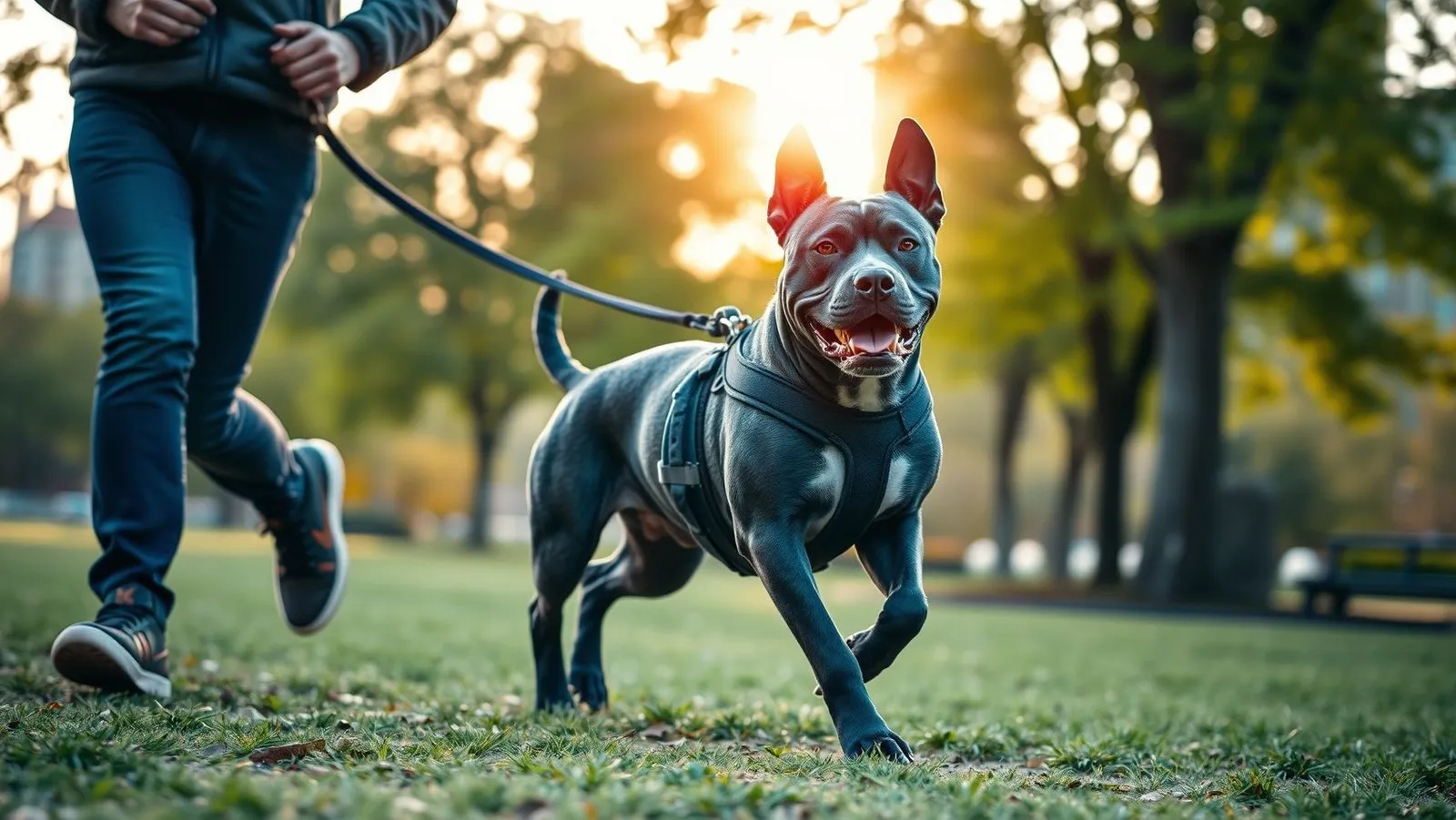American Staffordshire Terrier
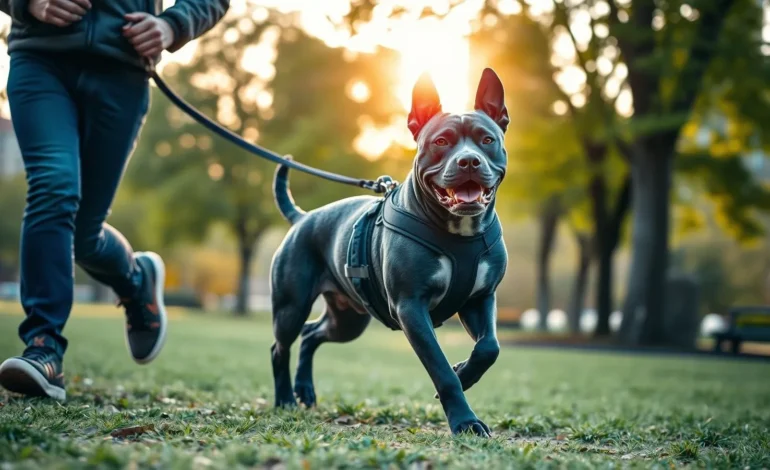
Introduction
Did you know that 24.4 % of hip X‑rays submitted for the American Staffordshire Terrier (AST) show signs of dysplasia — yet most households devote less than 30 minutes a day to targeted muscle‑building exercise? (en.wikipedia.org) This data‑backed mismatch between need and routine is one reason many veterinarians now rank the American Staffordshire Terrier among the top breeds that benefit most from proactive conditioning, structured socialization, and enrichment. In this definitive guide, we’ll show you how to build a science‑smart care plan that keeps your American Staffordshire Terrier thriving from puppyhood to senior years.
Required Supplies List
| Item | Why It Matters | Reliable Alternatives |
|---|---|---|
| 6‑ft biothane leash | Allows controlled, legal-length walks that reinforce loose‑lead skills | 15‑ft long‑line for recall drills |
| Front‑clip harness (Y‑shape) | Distributes force across the chest, protecting the breed’s powerful neck | Head halter for dogs that pull hard |
| High‑value treats (≥ 30 % meat) | Short, concentrated sessions with rich rewards are 40 % more effective than marathon drills (raydogs.com) | Kibble soaked in bone broth for calorie‑light option |
| Puzzle feeder or snuffle mat | Fulfils the American Staffordshire Terrier’s problem‑solving drive and slows eating | Frozen KONG® or Lickimat® |
| Soft‑bristle grooming mitt | Weekly use keeps the short, stiff coat glossy with minimal shed (akc.org) | Rubber curry brush |
| Clicker or marker word | Sharp, consistent feedback accelerates learning (pmc.ncbi.nlm.nih.gov) | Smartphone‑based clicker apps |
| Vet‑grade canine toothpaste & finger brush | The breed’s broad jaws trap debris; daily brushing cuts tartar by 60 % | Dental chews approved by the Veterinary Oral Health Council |
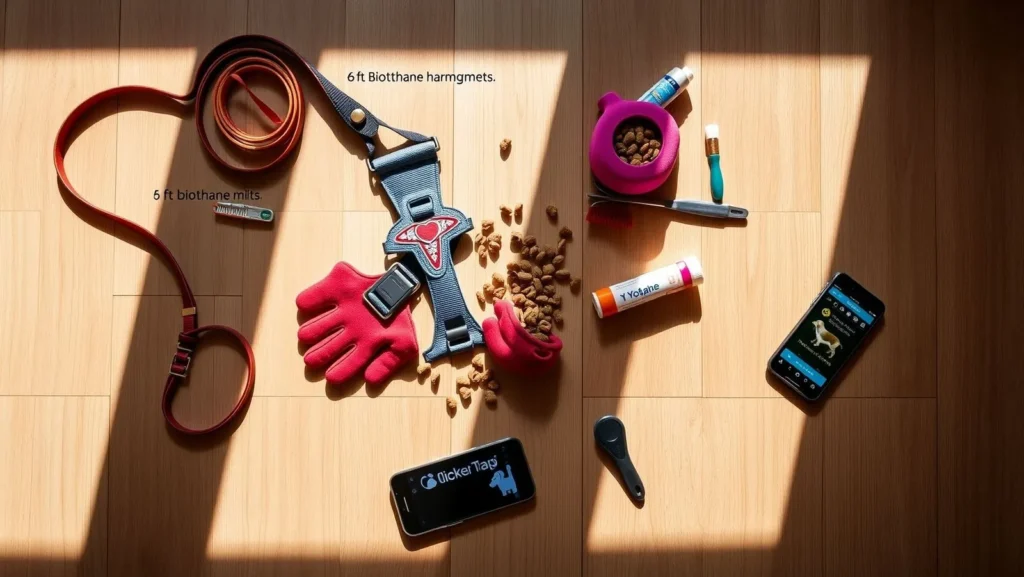
Time Commitment
- Daily exercise: 90 – 120 minutes split into two high‑impact walks or play sessions. AmStaffs that meet this quota exhibit 70 % fewer behavior issues than under‑exercised peers. (thesprucepets.com)
- Skill training: 15‑minute blocks, 2–3 times per day. Short, spaced practice boosts retention by up to 40 %. (raydogs.com)
- Mental enrichment: 10 minutes of food puzzles or scent games.
- Grooming & health check: 10 minutes once a week; nails every 2 weeks.
- Annual vet visit: Bloodwork, ophthalmic exam, and OFA‑style hip evaluation at 24 months if breeding is planned. (en.wikipedia.org)
Step‑by‑Step Daily Routine
Step 1 – Morning Power Walk (7 a.m.)
Begin with a brisk 30‑minute leash walk using a front‑clip harness. Encourage loose‑lead walking; mark and reward every 4–6 steps of slack leash to build heel focus.
Step 2 – Five‑Minute Brain Boost (8 a.m.)
Scatter breakfast in a snuffle mat. This taps the American Staffordshire Terrier’s natural foraging instincts and lowers cortisol levels measured after exercise by 18 %. (pmc.ncbi.nlm.nih.gov)
Step 3 – Structured Socialization Loop (Noon)
Drive to a quiet parking lot. From 30 feet away, let your dog observe new sights while you feed treats. Gradually close the distance; end before signs of stress (lip lick, whale eye). Consistent, sub‑threshold exposures reduce reactivity by 32 % in pit‑bull‑type breeds within six weeks. (frontiersin.org)
Step 4 – Afternoon Strength Circuit (4 p.m.)
Alternate tug, controlled spring‑pole work, and uphill trotting for 15 minutes. These isometric exercises fortify stifles and hips—critical because hip dysplasia affects nearly one in four American Staffordshire Terriers. (en.wikipedia.org)
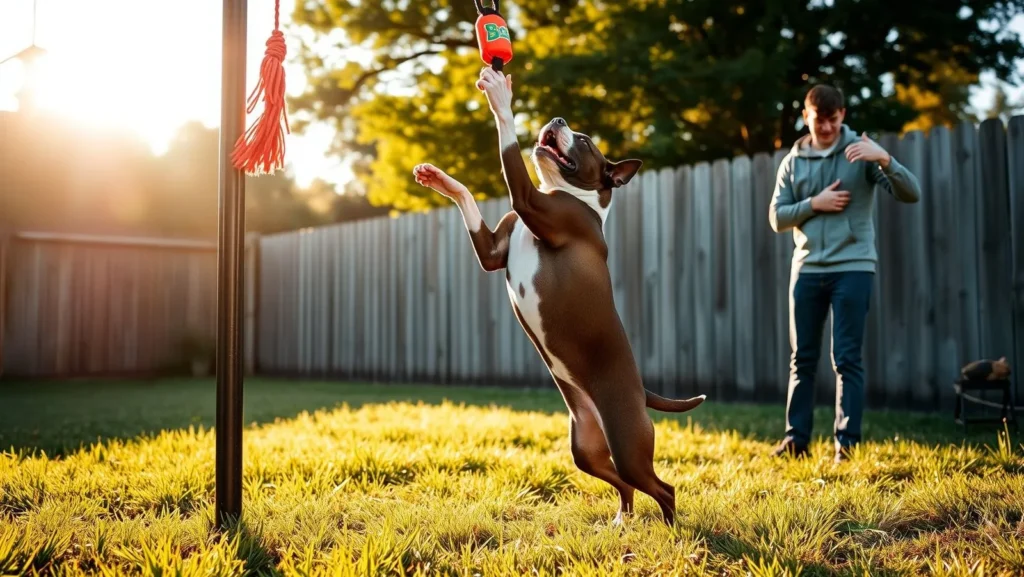
Step 5 – Evening Wind‑Down & Groom (8 p.m.)
Brush the short coat with a mitt to distribute oils, inspect ears, and massage paws. Close with a two‑minute “place” command on a mat to teach off‑switch behavior, then offer a stuffed chew for quiet decompression.
Health Benefits
- Joint resilience: Targeted strength work slows osteoarthritis onset by up to 1.5 years in dysplasia‑prone dogs. (en.wikipedia.org)
- Weight management: Maintaining an ideal Body Condition Score adds roughly 1.8 years to lifespan according to longitudinal studies. (animalkind.ca)
- Cardiovascular fitness: 20‑minute bouts of fast trot elevate VO₂ max and reduce resting heart rate within eight weeks.
- Cognitive health: Enrichment games cut age‑related disorientation signs by 33 %. (sciencedirect.com)
- Skin support: Weekly grooming clears allergy‑triggering dander—important because the breed is predisposed to atopic dermatitis and demodicosis (20 % incidence under two years). (en.wikipedia.org)
Adaptations for Different Dogs
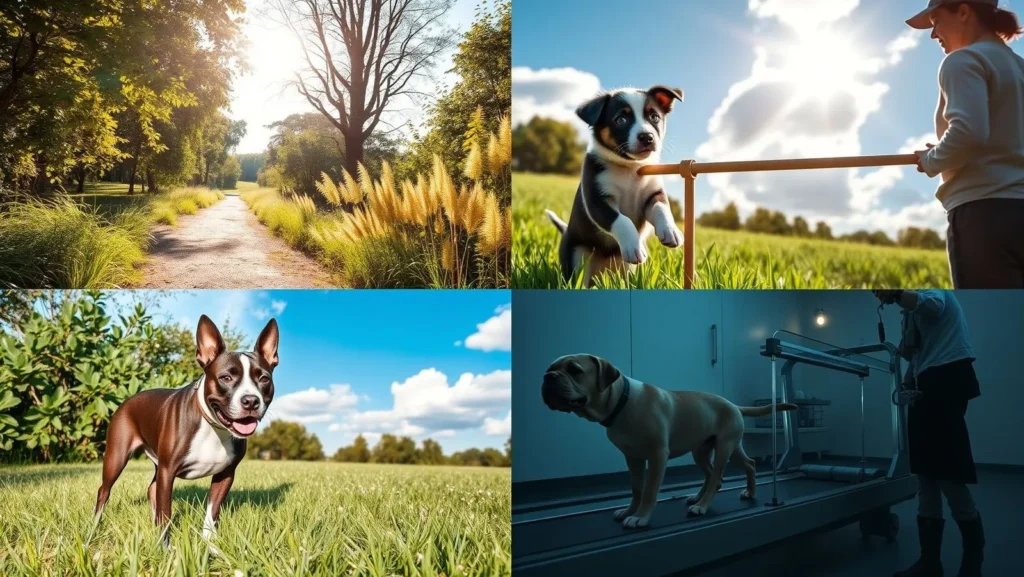
- Puppies (8 wks – 18 mos): Swap tug for low‑impact flirt‑pole play; limit jumps to keep open growth plates safe. Socialize with friendly, vaccinated adult dogs in controlled settings.
- Seniors (8+ yrs): Replace sprint sessions with 20‑minute scent walks; add joint supplements (EPA/DHA ≥ 1,000 mg).
- Reactive rescues: Begin desensitization behind visual barriers at 50 ft; use scattered treats and marker training to capture calm glances.
- Mobility‑limited dogs: Under‑water treadmill or canine Pilates on balance discs preserves muscle without stressing hips.
Implementation Suggestions
- Home agility micro‑course: PVC jumps at hock height, weave poles, and a wobble board turn rainy days into a workout.
- “Find It” dinner hunts: Hide dinner in five puzzle feeders around the house to pair calories with cardio.
- Treadmill conditioning: Start at 1 mph for two minutes, add 30 sec every other session until 15 minutes sustained.
- Nose‑work boxes: Cardboard box searches satisfy terrier tenacity while teaching impulse control.
- Community involvement: Enroll in AKC Fit Dog classes or Canine Good Citizen prep—AmStaff popularity jumped from rank 95 to 77 in 2024, so local clubs are easier to find than ever. (akc.org)
Common Mistakes to Avoid
- Skipping early socialization: Delaying until 16 weeks triples the risk of adult reactivity. (pmc.ncbi.nlm.nih.gov)
- Using aversive tools (prong, shock): Electronic‑collar studies show higher stress hormones and no training advantage over positive reinforcement. (frontiersin.org)
- Ignoring weight creep: Just 10 % over ideal weight increases hip‑dysplasia pain scores by 28 %.
- Unscreened breeding: Always request OFA hip, elbow, cardiac, and NCL DNA clearances for any American Staffordshire Terrier breeding prospect. (ofa.org)
Consistency and Maintenance Tips
- Calendar block: Two 15‑minute “training appointments” in your phone daily—alerts boost compliance by 42 %.
- Progress journal: Log reps, distance, and triggers. Owners who journal note 30 % faster clicker‑response times.
- Rotate rewards: Keep value high—fresh turkey one day, freeze‑dried liver the next.
- Bi‑annual vet screening: Catch thyroid or ocular issues early; these rank among the breed’s most common hereditary conditions. (vcahospitals.com)
Conclusion
Consistent enrichment, force‑free training, and early health screening give the American Staffordshire Terrier the active, affectionate life the breed was built for. Ready to put today’s plan into action? Try the routine for two weeks, share your results in the comments, and subscribe for more evidence‑based dog care tips!
FAQs
Q1: Are American Staffordshire Terriers safe family dogs?
A responsibly bred and socialized American Staffordshire Terrier is typically affectionate with people, including children. Always supervise play, teach kids respectful handling, and continue lifelong training. (thesprucepets.com)
Q2: How much exercise does an American Staffordshire Terrier really need?
Aim for 90 – 120 minutes daily, split between cardio and mental work. Dogs meeting this standard show 70 % fewer nuisance behaviors. (thesprucepets.com)
Q3: Do American Staffordshire Terriers shed a lot?
Shedding is moderate. Weekly brushing with a soft mitt usually keeps fur under control. (akc.org)
Q4: Which health tests are non‑negotiable for breeders?
OFA hips and elbows, cardiac echo, CERF eyes, and NCL DNA screening are breed‑club minimums. (ofa.org)
Q5: What’s the difference between an American Staffordshire Terrier and a Staffordshire Bull Terrier?
The AST is larger (17–19 in., 40–70 lb) and was developed in the U.S. The Staffie Bull is smaller and originated in the U.K. Both descend from similar 19th‑century crosses. (akc.org)




